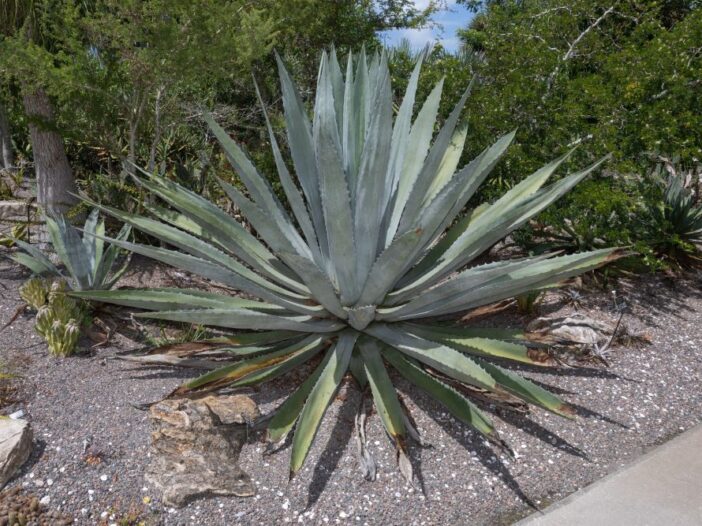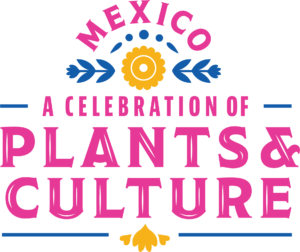
Agave, which Native Americans call Maguey, has long been rooted in the culture and traditions of Mesoamerica and Mexico. Legend speaks of an Aztec plant, Metl, that was struck by lightning. This gave birth to the tradition of Mexcalmetl, which means “cooked agave.” The Aztecs drank a form of fermented agave called “pulque” in their rituals. This was the first distilled drink produced in the Americas. Pulque, which is similar to kombucha, remains part of the Mexican culture and is popular even today.
But the better-known evolution of Mexcalmetl is the production of mezcal, a class of spirits made from agave. Tequila is among them.
Modern agave production resides in Jalisco, Mexico, where 80% of blue agave, the species that yields tequila, is grown. Another city in Mexico, Oaxaca, is historically rooted in production of mezcal, which can be made from 40 different species of agave and is made by roasting the plants’ cores, giving the spirit a distinct, smoky flavor.
Agave’s contributions to cocktails aren’t the only reason we find this plant fascinating. Read on to discover its unique characteristics and how to grow your own agave at home.
Did you know agave and asparagus are relatives?
- The family Asparagaceae includes genus like Agave, Asparagus, Dracaena (including former genus, Sansevieria, but that’s another story), Hyacinth, Chlorophytum (spider plants), Yucca, and more.
- Need proof of their family relations? Look to agave’s inflorescence (flower spike). They look like giant sprigs of asparagus. We currently have two foxtail agaves (Agave attenuata); they’re opposite each other on the path that dissects the garden.
- Agave are monocarpic, which means they only produce one flower in their lifetime, and this signals their final phase.
- All agaves are slow growing, and many can take at least a decade to reach maturity. Some reach 40 and even 80 years old!
There are more than 200 species of agave
The majority of agave species are found in Mexico. Many are threatened, especially wild varieties, due to increased large-scale production and demand for tequila and mezcal. Bats are the main pollinators of agave. They have a symbiotic relationship, and their interdependence means both are at risk. While the Garden is pleased to conserve agave by caring for them here on our campus, we hope to see more efforts to protect them in the wild for the sake of plants and bats.
Mangave, a cousin of agave, is faster growing and more tolerant of water than agave. This species is a hybridization of agave and manfreda plants. These are more sensitive to frost than most succulent agave leaves. Their manfreda genes make for beautiful spotting and patterned foliage. They also tend to have less aggressive spines.
Where to see agave in the Garden

We have many agaves within our Foster Succulent Garden. These species range from massive blue agave, Agave americana, to compact Agave potatorum ‘Butterfly Agave.’ Our Frida and Her Garden exhibition features agave varieties and relatives such as: Agave geminiflora ‘Twin-Flowered,’ Agave desmetiana, and False Maguey Grande, which grows a woody stem that appears as a tree.

Next to Nina’s Pavilion in the Kapnick Caribbean Garden is an agave that is hard to miss. Agave eggersiana is endemic to the dry forests of the Virgin Islands, meaning it occurs only there. This species, like many of Mexico’s wild species, is critically endangered. This is due to their habitat being converted to sugar plantations and livestock grazing. This genus is not known to produce viable seeds.

Agave make excellent additions to a South Florida home garden. To grow them at home:
- Agave look great in containers and prefer relatively compact pots. They are quite striking in a tall narrow pot. When repotting, stay within an 1 – 2” of the previous container’s diameter.
- Terra cotta and unglazed pots are better because they help to wick away moisture. Glazed pots cover the porous surface of the clay and prevent perspiration.
- They require little watering, and due to their monocarpic nature, they should not be fertilized, as this can trigger them to bloom prematurely.
- Agave need full sun! South-facing exposure is important.
- Be careful not to overwater. Always check 2 inches below surface of soil moisture before watering your agave. Well-draining soil is necessary in our rainy season. Do not provide additional watering during that time.
- They need a well-draining soil mixture and a pot that allows for good drainage. I recommend a succulent-specific mixture, but if you can’t find one, you can amend a general potting soil to have the same benefits (see below).
- Protect your hands from the spines along their leaves. You can wrap the plant in cardboard and wear gardening gloves to prevent injury. Goggles or protective eye coverings are always a good idea around their spines.

Agave potatorum
To make your own succulent potting mix:
- Start with a general potting soil, about a third of the total mix.
- Add one-third perlite, pumice, or lava rocks for necessary drainage.
- Add gravel or coarse sand for the final third of mix.
- Worm castings are a bonus addition if you have them available, about 10% of the total mixture. This promotes the microbiome of the soil.
THIS ARTICLE SUPPORTS THIS YEAR’S THEME, MEXICO: A CELEBRATION OF PLANTS & CULTURE, WHICH HIGHLIGHTS ONE OF THE MOST BIODIVERSE PLACES ON EARTH AND CELEBRATES CULTURAL CONNECTIONS TO THE NATURAL WORLD.

 About the Author
About the Author
Kristin Hood is the Stewardship Coordinator for Naples Botanical Garden. Longtime plant enthusiast and co-owner of Plant Parenthood NYC.

